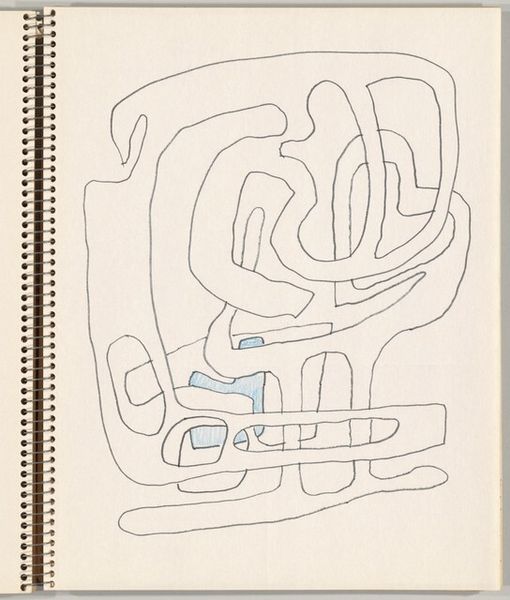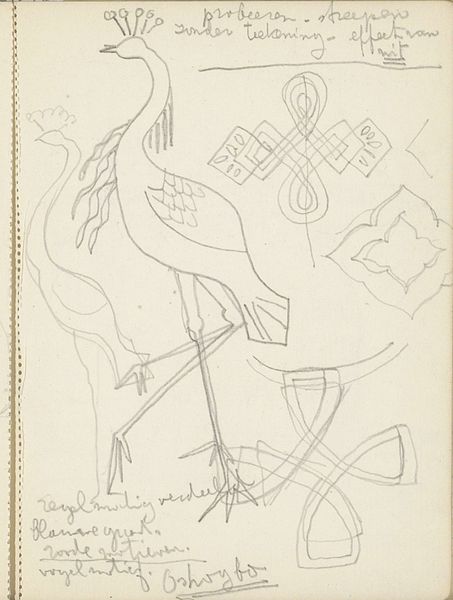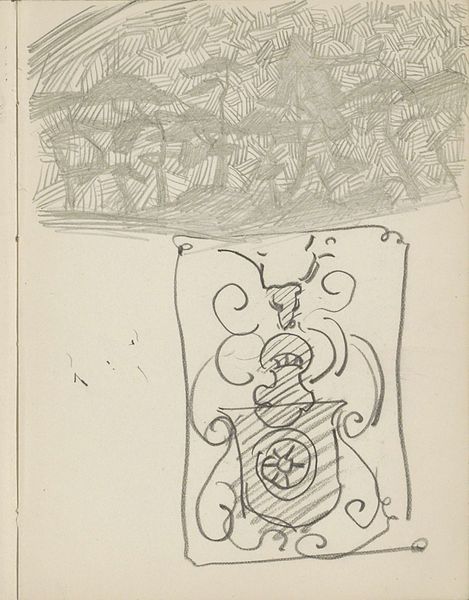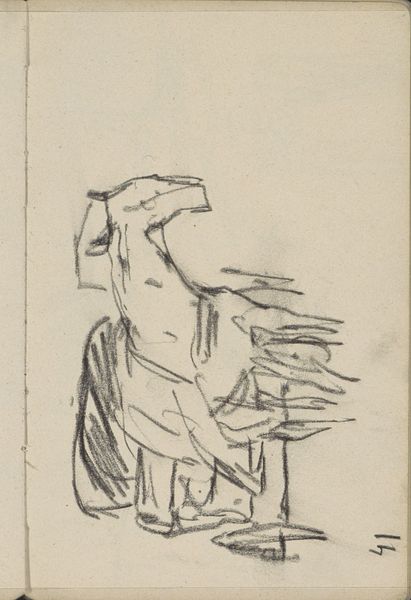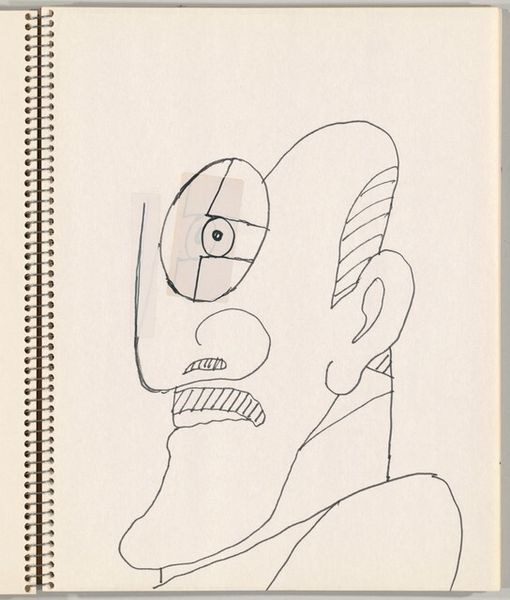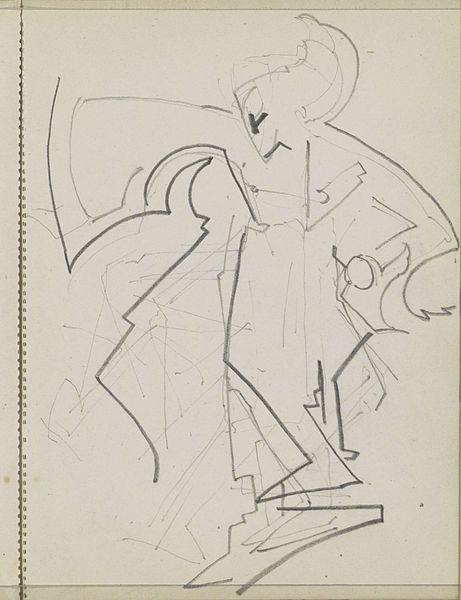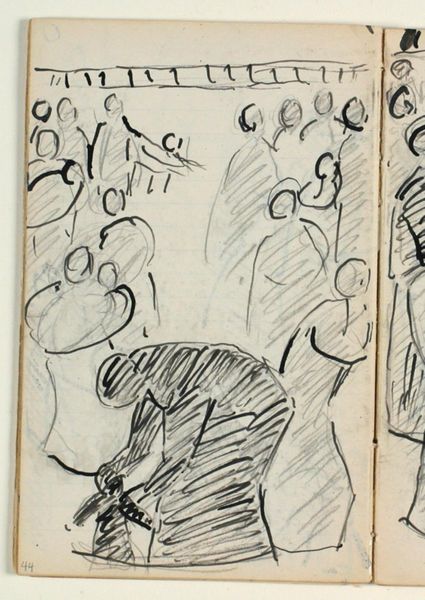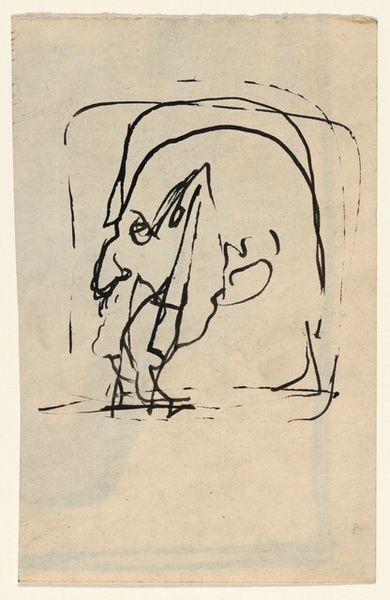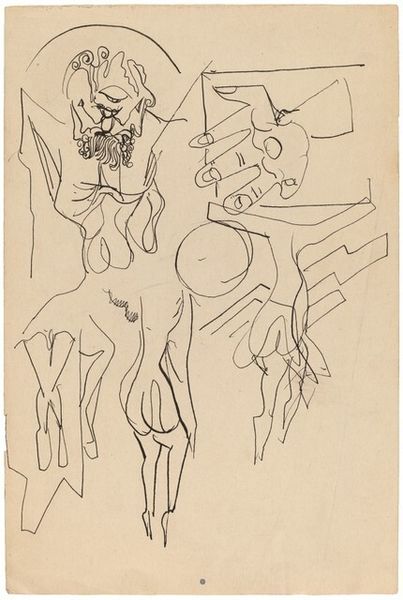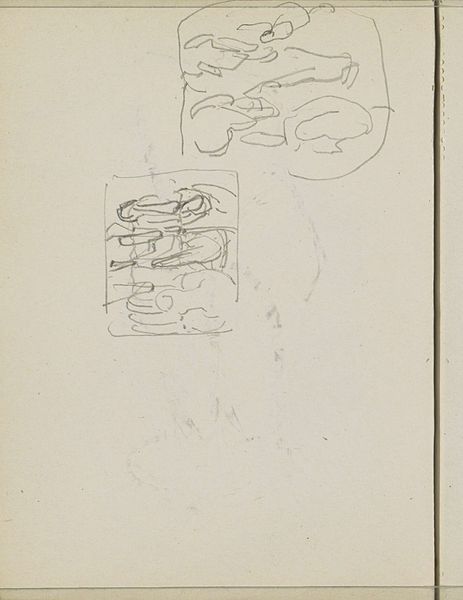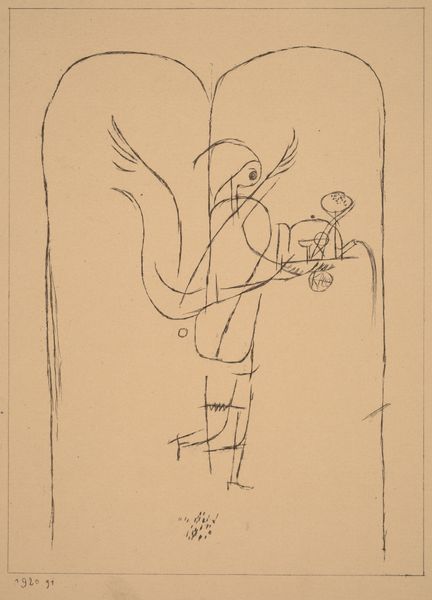
drawing
#
drawing
#
figuration
#
geometric
#
abstraction
#
line
Dimensions: sheet: 35.56 × 27.94 cm (14 × 11 in.) book: 35.56 × 27.94 × 1.27 cm (14 × 11 × 1/2 in.)
Copyright: National Gallery of Art: CC0 1.0
Curator: This is "Standing Figure," a drawing by Saul Steinberg from around 1986. It immediately strikes me as an attempt to reimagine form, what do you see? Editor: It feels rather… playful? Primitive almost, in its deconstruction. A jumble of forms suggesting a figure, but refusing to resolve. Like a child's drawing rendered by someone with a wicked sense of humor. Curator: Steinberg certainly had a talent for satire. There's an interesting duality here, this tension between recognizable figuration and total abstraction. Do you feel it also represents something of the anxieties inherent in modernism's engagement with tradition and progress? Editor: Absolutely. I'm fascinated by how Steinberg evokes what could be a mask or a totem, recalling ancient ritualistic forms through a wholly modern visual language. Note, for example, how the interlocking shapes suggest layers of meaning embedded in this "figure," like codes stacked upon one another over time. The way the negative space becomes as important as the drawn lines, as if revealing as much as it conceals. Curator: That reading highlights how Steinberg confronts cultural expectations around image-making and representation itself. His visual vocabulary constantly pushed the boundaries of how we read, or misread, familiar archetypes. It prompts consideration of gender, race, and societal narratives intertwined with this form of standing human shape. Editor: The simplicity of line work belies the complex ideas at play, it invites you to fill in the gaps, so to speak, and question what is meant by its “standing.” This challenges viewers’ expectations. One could view “standing” not merely as an anthropomorphic representation, but as a conceptual anchor relating the figure back through history toward primal human impulses, or simply what “holds one upright.” Curator: And in so doing, also prompts an important dialogue on historical, cultural, and social frameworks surrounding the act of viewing art in its purest expression of form and style? Editor: Exactly. We're prompted not only to look at it, but to also delve deeper into how figures resonate, how these resonances both support and disrupt the stories we tell ourselves. Curator: It's a perfect blend of aesthetic exploration and symbolic challenge. Editor: Precisely, allowing the past to shape the now as the symbolic meanings have changed shape throughout its use over time.
Comments
No comments
Be the first to comment and join the conversation on the ultimate creative platform.


